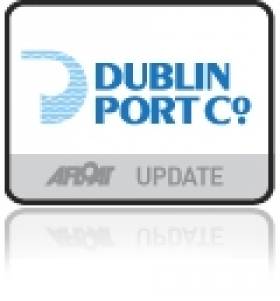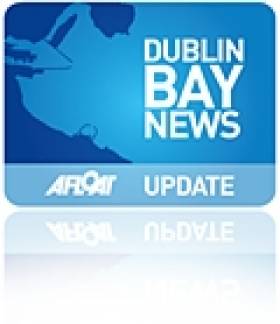Displaying items by tag: Masterplan
Masterplan for Development of Dublin Port Announced
A public consultation process, which will continue until 31st May 2011, will involve a series of stakeholder meetings at every level, including customers, business groups, statutory bodies and local councils. There will also be public information days in community venues around Dublin between 2pm and 8pm at Seán O'Casey Community Centre in East Wall on Tuesday, 26th April, Clanna Gael Fontenoy GAA in Ringsend on Wednesday, 27th April and at Clontarf Rugby Club on Thursday, 28th April. A detailed Issues Paper has been developed and submissions are being sought from all those with an interest in the future development of the Port and of Dublin city. The full Masterplan will be published by the end of the year and will form the basis of future developments at the Port.
Dublin Port Company Chief Executive Eamonn O'Reilly said the Port currently brings in over half the goods Ireland imports and is again approaching capacity constraints. "Dublin Port has not added any new land in the last 30 years and in that time we have quadrupled the volume of goods going through it. We now handle €35 billion per annum in trade going in and out of the Port and will easily double our volumes again by 2040. We need to grow, in a way which better integrates the Port with the city and which contributes substantially to improve both the natural and built environments. However, how we do all of this needs to be tempered and modulated by the needs of the city and its citizens. Hence, we are launching this consultation exercise to elicit the views and opinions of planners, citizens, other State bodies and anyone with a keen interest in the future development of this great city".
Speaking at the launch of the consultation process, Leo Varadkar TD, Minister for Transport, Tourism & Sport said a new plan for Dublin Port is vital to ensure the smooth and efficient running of the economy, and will play an important role in building national competitiveness, securing overseas investment and supporting tourism.
"I welcome the master-planning initiative being taken by Dublin Port. This is in line with international best practice and with measures to improve integrated transport planning more generally. Port master-planning is being addressed in the Ports Policy Review, which is currently underway. It is an important tool for ensuring the future development of Irish ports over the coming decades.
"It's important that all of Dublin Port's stakeholders have a say in the future of the port, from importers, exporters and ferry passengers to public bodies and local residents.
"I very much welcome this comprehensive engagement exercise in developing a shared vision for the future of the port and its part in our economic landscape," added Minister Varadkar.
Among the issues to be examined in the consultation process are:
Current and future land use within the 261hectares Port estate.
Maximising Dublin Port's position at the hub of Ireland's road and rail networks, with more than 13,500 truck movements in and out of the Port on a daily basis.
How Dublin Port links to and interfaces with the rest of the city.
Environmental and sustainability priorities.
The relationship between the Port and its local communities.
The identification and securing of new lands for development of Port facilities.
Maximising the tourism potential of Dublin Port for the benefit of the country. Over 80 cruise liners currently dock annually at Dublin Port, generating between €35 and €50 million in revenue for the city, while more than 1.8 million ferry passengers enter and exit the country through the Port.
Dublin Port Company Chairperson Lucy McCaffrey said the Masterplan would provide the blueprint for the third significant phase of development in the Port's modern history. "The city literally grew up around the Port as a trading channel over the last thousand years and over the past century its central role in the economy has been cemented. Dublin Port is set to play a strong role in our national recovery. I would appeal to all stakeholders to input now into the plan for the next 30 years of its development".
Further information on the Dublin Port Masterplan is available from www.dublinport.ie/masterplan
Dun Laoghaire Harbour Invites Public's Views on Masterplan
The Dun Laoghaire Harbour Company has invited the public to submit their ideas about the future of the harbour. A masterplan is to be developed so to address the changing emphasis of the harbour from a commercial harbour to a recreational harbour and the impact of change in the profile of ferry sailings on the Dún Laoghaire - Holyhead route. For further details please logon HERE In addition a map of the harbour, showing the extent of the area concerned.






























































